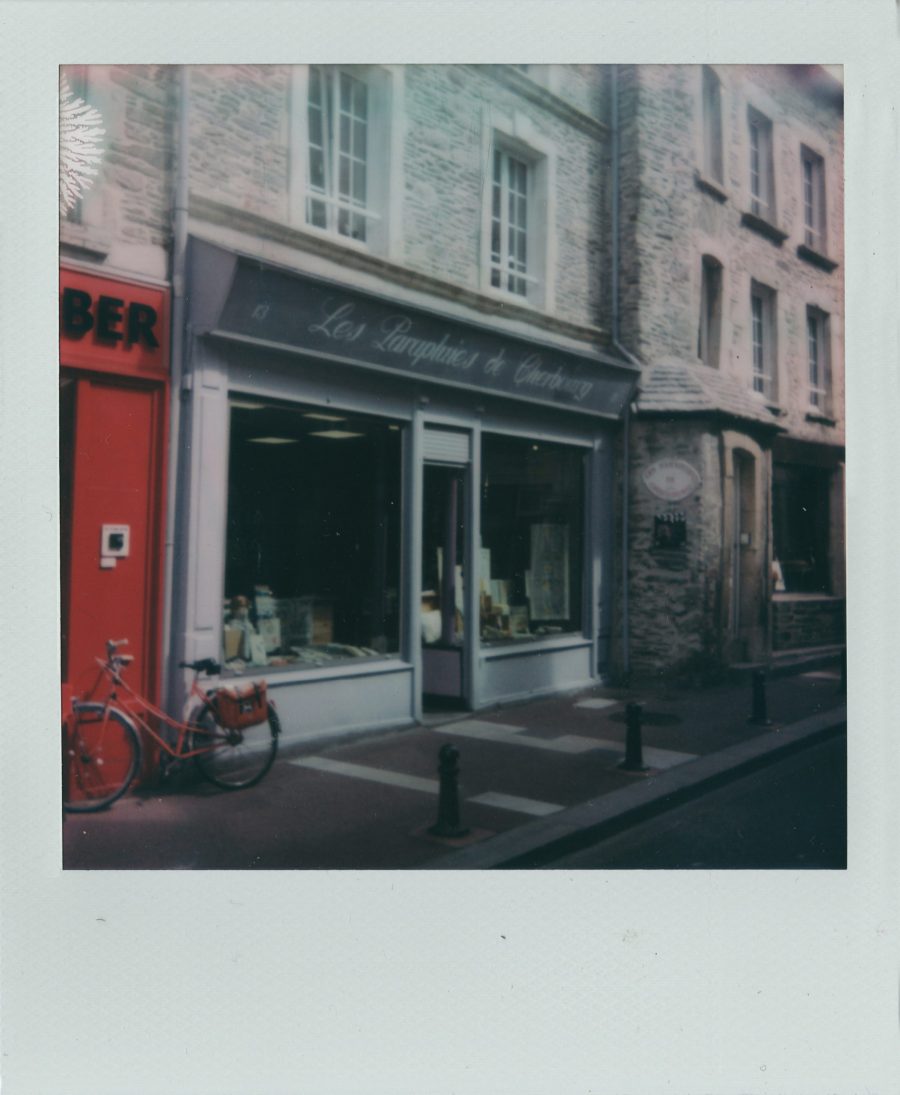Jacques Demy made some of the most colourful and vibrant films of the 1960s. Drawing influence from the classic Hollywood musicals of the previous decade, Demy transplanted their joyous celebration of living onto a distinctly French landscape, bringing in the natural innovations then evolving in his own country’s cinema via the French New Wave.
Released in 1964, The Umbrellas of Cherbourg epitomises Demy’s distinctive take on the musical genre, using the vast skills of composer Michel Legrand to create a through-musical in which the melodies were as ceaseless as the town’s rain. Along with the tunes and overtly romantic drama on display, the director showed a keen eye for the cities he set his films in, rendering even the most seemingly normal of towns within the style of a Hollywood fairy tale. Under Demy’s gaze, Cherbourg becomes a fantastically vivid place.
Demy’s film is split into three segments telling the story of Guy (Nino Castelnuovo) and Geneviève (Catherine Deneuve) who live in the French port town. Guy works hard in the local mechanics to support his old aunt (Mirielle Perrey) while Geneviève works in the umbrella shop of her mother, Madame Emery (Anne Vernon). The couple are madly in love and plan to marry in spite of disapproval from Madame Emery in particular.
Unfortunately for Guy, he is drafted into the army to fight in the Algerian War meaning he must leave Geneviève for several years. A night of passion not long before Guy departs leaves Geneviève alone and pregnant. But will their relationship last the distance or will new faces slowly fill the absence in Geneviève’s life before Guy’s return?
As with Demy’s other films, this is a detailed and unique portrait of a provincial towns. The director had a refreshing habit of moving away from the Parisian settings of his contemporaries, finding it fruitful to express the same chocolate-box vision of the Stanley Donan musicals he loved in more local settings. Whether it be Nantes in Lola, Nice in Bay of Angels or Rochefort in The Young Girls of Rochefort, honing in on a specific, idiosyncratic location seemed to be part of Demy’s working; finding great potential in France’s coastal towns. Umbrellas is a perfect example of this and arguably put the town of Cherbourg on the cinematic map.

As the opening credits play, we see rain falling onto the cobbles of the town’s dockland as umbrellas keep the passersby dry. The camera soon shifts from its vertical position, showing a landscape shot of the town’s main dockland behind the title of the film’s first chapter. Demy tended to focus on the centre of towns, finding his own rhythms within their designs.
The port we first see is at the centre of Cherbourg, and many of the other locations featured in the film are not far from it. This is the same dock we see later on when characters wander and discuss their wants and desires, as if Cherbourg’s water seems to loosen their tongues and allow their truths to pour forth. Today, the dock is less busy with boats but, aside from a few modern interventions, the view from Pont Tournant is mostly unchanged.
Rather like the town of Rochefort, Cherbourg celebrates Demy’s film extensively. A walking tour is available taking in several locations (though notably not Guy’s final petrol station which is, if Google Street View is anything to go by, in a sorry state), and many of the main locations used are marked with special plaques.
Though several of these locations were visited, the other I chose to photograph was the main shop used throughout the film. We first see the shop at night, the street’s cobbles lit with an alluring array of colours reflecting the sheen of the fallen rain. Later we see it in the daytime, still colourful as its vibrant interiors beam out of the building’s vast windows.

The building is still there today on Rue du Port, a minute from where Demy shot the opening dockland visual. The road itself is seen throughout the film too, especially in the scenes of the town’s carnival snaking through the centre. The shop today sells crafts rather than umbrellas but is named in honour of the film all the same. A small music box that chimes a tune when turning its handle is also housed on the nearby wall though whether the music it plays is one of Michel Legrand’s many themes from the film is difficult to tell.
Cherbourg has undoubtedly changed a great deal since Demy filmed there. While its centre has retained much of its original character, the views from the edges of the locations reveal vast new builds on the skyline, incredibly busy roads and derelict concrete shells of buildings left to decay. The Umbrellas of Cherbourg ultimately acts as a time capsule for when the city retained a sense of fairy tale; echoes of old Hollywood musicals still ringing between the cobbles.
The post On Location: Scenes from The Umbrellas of Cherbourg appeared first on Little White Lies.
![Forest Essentials [CPV] WW](https://s3-us-west-2.amazonaws.com/pcw-uploads/logos/forest-essentials-promo-codes-coupons.png)
0 comments